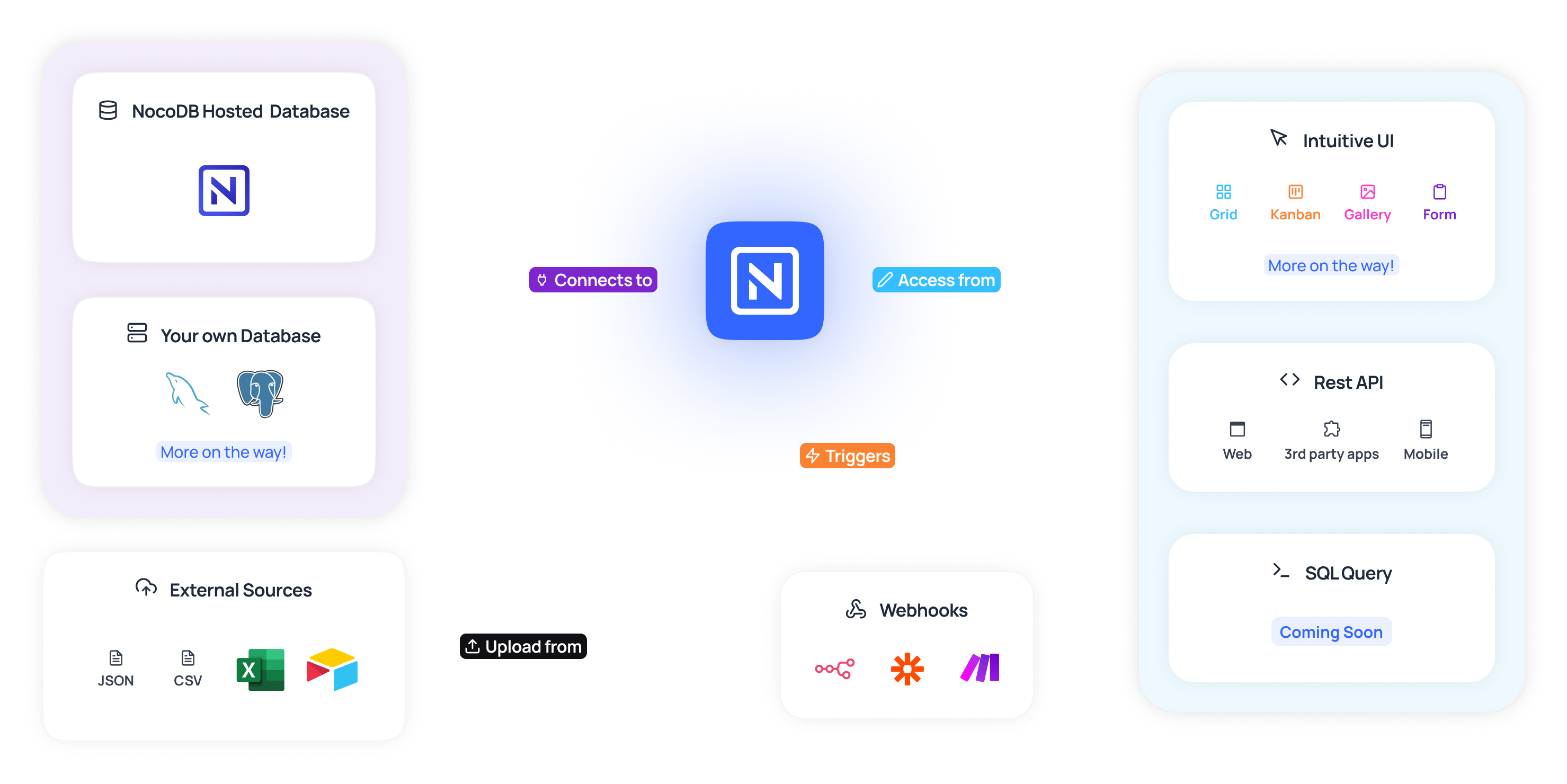Streamline Open System Data Source Creation with No-Code Advancement Operatings Systems
Streamline Open System Data Source Creation with No-Code Advancement Operatings Systems
Blog Article
A Comprehensive Guide to Applying Scalable Databases Without the Demand for Coding Knowledge
In the modern landscape of data management, the capability to apply scalable databases without coding knowledge is coming to be increasingly necessary for organizations of all sizes. This guide aims to brighten the process, concentrating on straightforward tools and intuitive user interfaces that demystify data source arrangement. By analyzing crucial functions, reliable strategies for execution, and ideal practices for ongoing administration, we will deal with exactly how also non-technical users can with confidence navigate this complicated terrain. What are the vital aspects that can really empower these individuals to utilize scalable databases efficiently? The responses might redefine your strategy to information monitoring.
Recognizing Scalable Data Sources
In the world of modern information management, scalable data sources have actually become a critical option for companies looking for to deal with enhancing volumes of details efficiently. These data sources are made to accommodate development by enabling the smooth enhancement of sources, whether through horizontal scaling (including a lot more makers) or upright scaling (updating existing equipments) This versatility is crucial in today's busy digital landscape, where information is created at an extraordinary rate.
Scalable databases normally utilize dispersed designs, which make it possible for information to be spread throughout several nodes. This circulation not just boosts performance but additionally offers redundancy, ensuring information availability even in the occasion of equipment failings. Scalability can be an important variable for various applications, including e-commerce systems, social media networks, and large information analytics, where user demand can change substantially.
In addition, scalable data sources usually feature durable data uniformity models that balance efficiency and integrity. Organizations should consider their certain demands, such as read and write speeds, information stability, and fault resistance when selecting a scalable database solution. Inevitably, understanding the underlying concepts of scalable data sources is crucial for businesses aiming to flourish in a significantly data-driven world.
Secret Functions to Seek
When evaluating scalable data sources, numerous key functions are vital to guaranteeing optimal performance and integrity. Most importantly, take into consideration the architecture of the data source. A distributed style can enhance scalability by allowing data to be stored across several nodes, promoting smooth information gain access to and processing as need rises.
Another critical function is information dividing, which makes it possible for reliable monitoring of big datasets by separating them into smaller sized, more manageable items (no-code). This method not just improves efficiency however also streamlines source allocation
Additionally, look for durable replication abilities. This attribute makes sure data redundancy and high accessibility, minimizing downtime during maintenance or unexpected failures.
Performance monitoring devices are also important, as they offer real-time understandings into system wellness and operational efficiency, enabling prompt modifications to preserve optimal performance.

User-Friendly Database Tools
Simplicity is a vital component in the design of user-friendly database devices, as it enhances access for users with varying levels of technical know-how. no-code. These devices prioritize instinctive interfaces, enabling individuals to create, take care of, and query data sources without needing comprehensive shows expertise
Secret functions typically consist of drag-and-drop functionality, aesthetic data modeling, and pre-built themes that simplify the arrangement procedure. Such tools usually use led tutorials or onboarding processes that assist in individual engagement and reduce the discovering curve. Furthermore, seamless combination with popular data resources and solutions makes certain that individuals can easily import and export data, additionally simplifying operations.

Additionally, robust support and community sources, such as online forums and documents, enhance the customer experience by supplying aid when required. In general, straightforward database tools empower organizations to harness the power of scalable data sources, making data administration available to everybody included.
Step-by-Step Application Overview
Just how can companies successfully execute scalable databases to satisfy their growing information needs? The procedure starts with identifying particular data demands, including the volume, variety, and speed of information that will be refined. Next, companies should review user-friendly data source devices that supply scalability attributes, such as cloud-based remedies or handled database services.
When the appropriate tool is selected, the following step involves configuring the database setting. This consists of establishing up circumstances, defining customer permissions, and developing data structures that align with business purposes. go to this web-site Organizations ought to then move existing information right into the new system, making certain data stability and very little continue reading this disturbance to procedures.
Post-migration, conducting comprehensive testing is critical; this includes efficiency screening under numerous lots conditions to make sure the system can manage future development - no-code. Additionally, it is crucial to educate personnel on the data source administration interface to help with smooth usage
Ideal Practices for Monitoring
Reliable management of scalable databases calls for a strategic strategy that focuses on continuous tracking and optimization. To achieve this, organizations should carry out robust monitoring devices that supply real-time understandings right into database efficiency metrics, such as query feedback times, resource application, and deal throughput. Routinely examining these metrics can help determine traffic jams and areas for improvement.

Regular backups and disaster healing strategies are vital to safeguard information honesty and schedule. Establishing a routine for evaluating these back-ups will certainly guarantee a reliable healing procedure in case of an unforeseen failure.
Additionally, efficiency tuning need to be a continual procedure. Adjusting indexing methods, optimizing queries, and scaling resourcesâEUR" whether vertically or horizontallyâEUR" will certainly help maintain ideal performance as usage demands progress.
Finally, fostering a society of understanding sharing among employee will certainly make it possible for continuous discovering and adaptation, making certain that the administration of scalable databases remains effective and reliable over time.
Conclusion
To conclude, the application of scalable data sources can be properly attained without coding experience with the utilization of easy to use devices and instinctive interfaces. By sticking to the described approaches for setup, information movement, and efficiency screening, people can browse the intricacies of data source management with ease. Emphasizing ideal techniques for ongoing upkeep and partnership further improves the capability to take care of scalable data sources effectively in a swiftly evolving data-driven atmosphere.
In the modern landscape of data administration, the capability to apply scalable databases without coding expertise is coming to be significantly crucial for companies of all dimensions.In the realm of modern-day data monitoring, scalable databases have actually emerged as a crucial solution for companies seeking to handle boosting volumes of details successfully.In addition, scalable data sources often include durable information consistency versions that stabilize performance and dependability.Exactly how can organizations efficiently apply scalable data sources to meet their expanding data demands? Next off, companies need to evaluate easy to use database tools that offer scalability attributes, such as cloud-based options or took care of database solutions.
Report this page